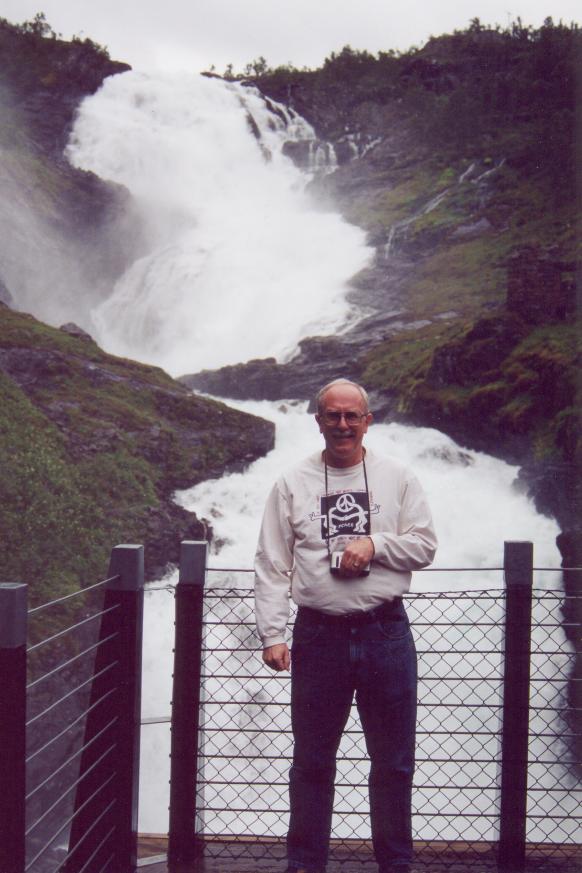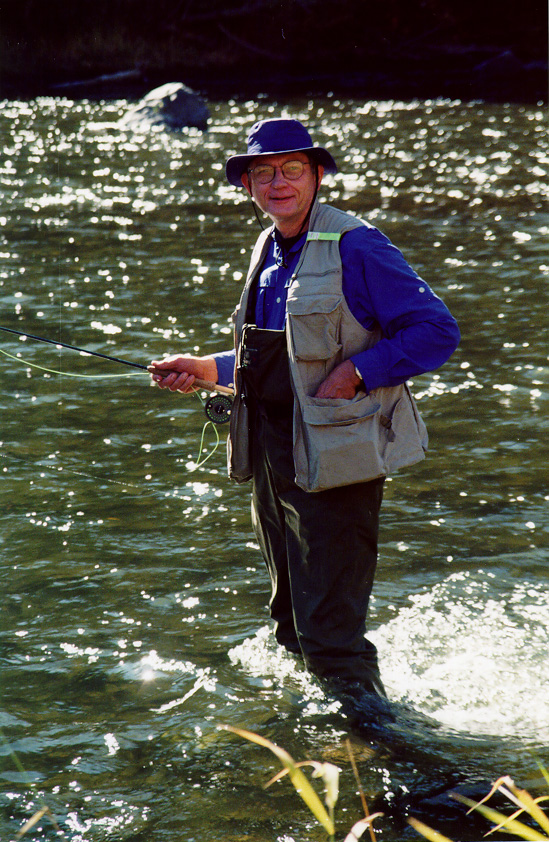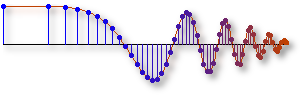The Authors

James McClellan
Professor
Georgia Tech

Ronald Schafer
Institute Professor
Georgia Tech

Mark Yoder
Professor
Rose-Hulman
A key step in the development was Mark Yoder's idea to put all of our demos in a form that other teachers (and students) could access easily. That idea led to this CD-ROM which captures the entire contents of our course web site: demonstrations and animations used in classes, laboratory assignments, and solved homework problems. As teachers, this material has changed the way we present ideas, because it offers new ways to visualize a concept "beyond the equations." We anticipate that our web site will continue to grow, and that users of this material will see new ideas take shape in the form of additional demos and labs.
Finally, it is worth speculating on whether this type of material will become a common supplement for lecturing in an age where "computers in education" is the buzz word. Maybe, maybe not, but it is easy to say that these new forms of computer-based media provide powerful ways to express ideas that motivate our students in their engineering education. As authors, we continue to experiment with different modes of presentation, such as the narrations and movies on this CD-ROM, along with the huge archive of solved problems. In the original DSP First CD-ROM we noticed that finding material was a challenge, so we have provided a search engine on this CD-ROM in order to make is easy to find relevant material from keywords searches.
Our first book entitled, DSP First: A Multimedia Approach, published in 1998, was written for a one quarter course at Georgia Tech. Our idea was that the subject of DSP had everything we wanted in a first course for computer engineers: it introduced the students to the use of mathematics in engineering; it laid the groundwork for subsequent courses (including linear circuits); it made a strong connection to digital computation; and it offered the possibility of interesting applications to motivate the hard work of connecting mathematics and computation. This meant that our computer engineering students would not see electric circuits as their introduction to ECE. In retrospect, it doesn't seem to be such a radical idea, since digital signal processing is arguably as fundamental to computer engineering as is electric circuits. Now, after almost ten years experience, I am convinced that the advantages of teaching DSP first are significant for electrical engineers as well as for computer engineers. Furthermore, the subject has increasing relevance to other technical disciplines such as computer science, which is turning increasingly to applications of computers involving multimedia information, and to other branches of engineering, where DSP techniques are being used routinely to collect and massage data of many types.
No sooner had we finished DSP First, than Georgia Tech switched from a quarter system to semesters, and our course became "Signal Processing First", the first course for both computer engineers and electrical engineers. However, we were left with a textbook that only covered two-thirds of the material that we needed to include for the semester-long course. This led to another four years of development that included four new chapters, many new laboratory assignments, many new demos and visualizations, hundreds of new homework problems and solutions, and up dates of many of our original computer demos. This CD-ROM contains all of that material. It represents an untold amount of work by the three authors and many students and colleagues. We have already seen the return on our investment in our own classes and those of other teachers who used DSP First, and I am sure that the new materials will be used in many ways that we have not anticipated. I am looking forward to hearing from users about what works and what doesn't work for them.
In January of 1995 I took a sabbatical leave from Rose-Hulman and joined Jim and Ron at Georgia Tech. There I taught DSP First for 2 quarters. They had already created an impressive array of demonstrations and labs which really made the class fun to teach. It was during this time we decided to do the book with a CD-ROM.
While in Atlanta my colleagues at Rose-Hulman decided to make DSP First a required course for our computer engineers and design a new computer engineering curriculum. Now, five years later, it's used in a junior level course required for both computer and electrical engineers.
Five years later has also seen great changes in what we can do with the CD-ROM. As Jim noted, the DSP First CD-ROM had no search engine. Adding the search engine to the SP First CD has made finding things much easier. Now, if you want to know why firfilt.m is in the spfirst MATLAB toolbox, you can just search for firfilt.m and see all the labs and homework that use it.
We are living in a world that is becoming more and more digital. It has been fun to be part of a project that helps make our curriculum better reflect the world our students are entering.
The Students Behind the Scenes
Fortunately, we have been able to motivate a number of extremely talented students to contribute to this project. Of the many participants, five students provided essential material to the CD-ROM. First of all, two graduate students who served as award-winning teaching assistants (TAs) in the course over many quarters:Jordan Rosenthal developed a consistent way to write GUIs that has now been used in all of our demonstrations. Many other students have benefited from his extraordinary MATLAB expertise.
Jeff Schodorf developed the original aliasing and reconstruction demos for Chapter 4, and did a lot of the early organization of all the DSP First CD-ROM demos along with Mark Yoder.
David Anderson apprenticed with Jeff and then took over the course as its primary TA. As we neared the final deadline, David contributed new labs, and also redesigned the DSP First lab format, so that the CD-ROM version would be easy to use.
Greg Krudysz wrote CON2DIS and has now taken over the primary role in developing GUIs.
In addition, many undergraduates have implemented MATLAB programs, graphical user interfaces (GUIs) and demos that are an important part of this CD-ROM:Amer Abufadel developed the image filtering demo for Chapter 6.
Thanks to many other professors:
During the past few years many professors have participated in the sophomore course ECE-2025 at Georgia Tech. Many of them have also written solutions that are included on this CD-ROM. We an indebted to them for permitting us to include their solutions:
| Randy Abler | Yucel Altunbasak | John Bordelon |
| Giorgio Casinovi | Russ Callen | Kate Cummings |
| Richard Dansereau | Steve DeWeerth | Michael Fan |
| Bruno Frazier | Faramarz Fekri | Elias Glytsis |
| Monty Hayes | Bonnie Heck | Mary Ann Ingram |
| Paul Hasler | Chuanyi Ji | Aaron Lanterman |
| Russ Mersereau | Geofferey Li | Steve McLaughlin |
| Mohamed Moad | Bill Sayle | Mark Smith |
| Whit Smith | David Taylor | Erik Verriest |
| Doug Williams | Tony Yezzi | Tong Zhou |
